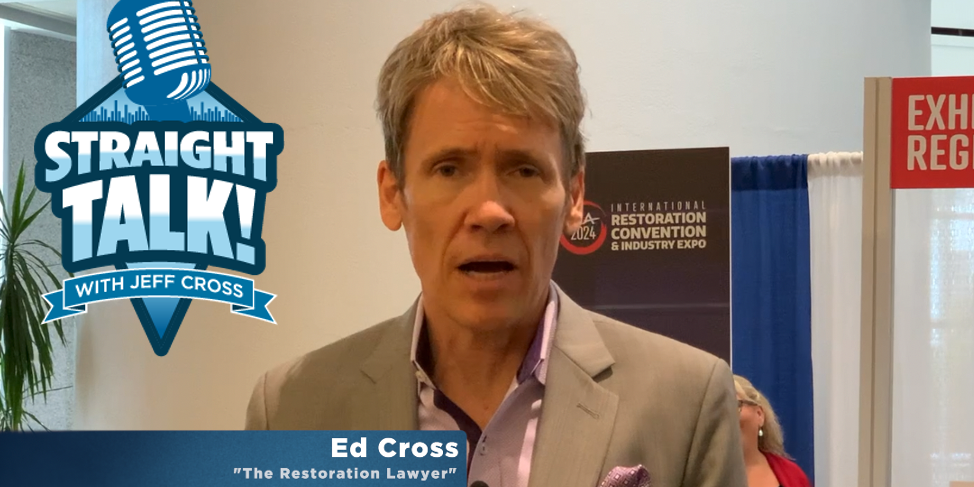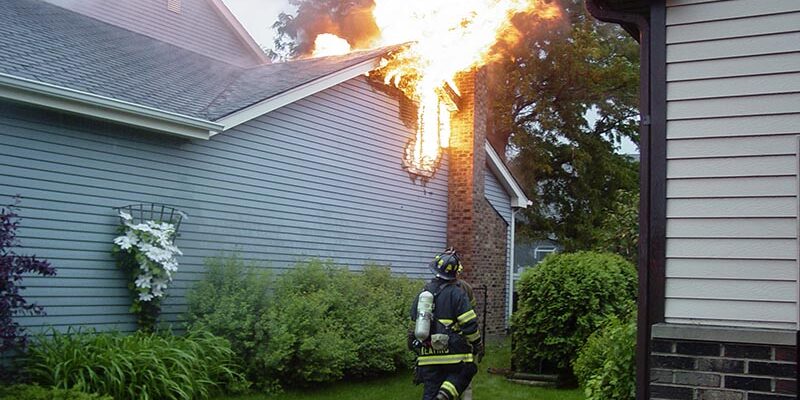Temporary Containments

By Keith Gangitano and Michael Pinto
What does the February report on the discovery of ancient Roman ruins in Germany have to do with an article about temporary containments used in many areas of cleaning and restoration? The archaeological report reminds us that different forms of containment have been used continuously, dating back thousands of years, to protect people from threats both inside and outside the containment. Whether it is wooden stakes positioned to protect an encampment from invaders or the bars and razor wire used in prisons, the concept of containments has been with us since ancient times.
For the sake of relevance, this discussion will focus on threats that are decidedly smaller than a barbarian horde or a carefully planned jailbreak. The threats we will cover here are spores, asbestos fibers, lead dust, volatile organic compounds, fire residue, biological pathogens like the COVID virus, or any other contaminant that is likely to be or become airborne.
By minimizing the movement of harmful agents from a contaminated area to adjacent spaces, temporary barriers contain the problem in order to protect human health. These agents range from things like mold and asbestos that represent a health risk, to things like fentanyl and biological weapons that represent a clear and present danger. The former is defined as something that may or may not cause illness now or in the future, an unfortunate feature that tends to engender complacency. Whereas the latter is something that will definitely kill you and everyone around you, a truly unfortunate feature that limits complacency to one and done.
‘Tough guy’ syndrome
We are all guilty of “holding our breath” while creating a temporarily unsafe environment like spraying some chemical for a couple of seconds, and have come away mostly unscathed but have you ever skipped the respirator in an attic because you are going to be “in and out,” only to spend the next several hours coughing? There is a lot of machismo and denialism (ostrich syndrome) in this industry. The ultimate bandage after all is duct tape and a new glove but that kind of thinking is just dead wrong!
One of the forgotten aspects of many cleaning and restoration projects is the repetitive nature of the tasks, and potential exposures! The exposures of many dangerous substances can be cumulative. Lead dust is a good example; as the material collects in the blood, then the soft tissues, and eventually the bones. One well-documented pathway to lead poisoning (as well as asbestos and silica, among other contaminants) is from dust being brought home on the clothes of the worker. A child doesn’t care that their parent is a self-styled tough guy when they are exposing them and their family to dangerous levels of contaminants.
Tripping over a dollar just to save a quarter
So many people skip solid containment, or containment at all even on mold jobs, because they are expensive to execute well (labor and materials) but then they end up cleaning the whole house. Not only is that ultimately more expensive but it’s bad for business. If the TV in the master bedroom, upstairs, down the hall and behind a closed door is covered in drywall dust then that is just shameful. It is downright unprofessional and entirely unnecessary. That doesn’t even account for the guilty conscience, liability, and potential lawsuits when someone gets sick.
Another reason to skip containment is that the contractor may not actually have people that know how to do it. One way to avoid this conundrum is to pay wages above the bare minimum. This all too rare approach increases the retention of experienced, skilled individuals. Employee retention and recruitment is a well documented problem that plagues the industry. The irony is that if you fix the first problem you also solve the second. When you fix both problems then everything gets better. If the job you offer isn’t easily replaced then you won’t just get good containments, you’ll get loyal people that protect your reputation and your bottom line.
The mammalian response or dive reflex
This industry is, by its very nature, reactive. After all, the next event is only ever a phone call or weather forecast away. This reality, as well as limited staff, makes it tough to be proactive. But just like the diving reflex will cause a baby to hold its breath when submerged in water, only to quickly drown because it can’t actually swim, so too will an untrained worker muddle through the first days, weeks, or months only to sink to the bottom and quit or get fired.
Early, continuous and advanced training is the best way to be proactive and stop this cycle. Everyone on the team should know the why, not just the what, and if they don’t know then teach them. Teach them also that they can be vigilant without being paranoid. Going back to the swimming analogy, by teaching someone to swim they will respect not fear the water and if the conditions are right they could learn to like it, or even love it.
When you teach someone something new then you begin to have depth on your bench that is so often lacking, and you have more eyes on your jobs. These trained eyes can often spot two things, potential problems and greater opportunities. It’s always the experienced tech that load tests the breaker with the microwave, while all of the equipment is running and before leaving for the night, and can legitimately turn a $1500 appetizer into a $5000 main course. Well paid, experienced techs also know that the containments, PPE and well established procedures aren’t there just for theater.
It is your job as the leader, or even as a coworker, not to minimize a thing and/or make it all about speed or the money. It is the job of everyone to stay alert and feel empowered, compelled even, to bring attention to incorrect applications of tools or techniques and most importantly to point out conditions that could threaten life and limb. The only way this works is if everyone is well trained to the level of their work requirements and cross trained through knowledge transfer so that, even at a basic level, everyone knows why, for example, the containment is so important and how to use it effectively.
We further must internalize the belief in a higher purpose. If it is clear to all that this work is valued, important and that the people that do it are unique, highly trained specialists and not just unskilled cleaners in bunny suits and a respirator, then everyone will begin to identify their work in restoration as a membership in an exclusive club. This club does not accept all applicants, not everyone is cut out for this type of work.
Everyone needs to keep learning. As the science supporting the mold remediation industry has advanced, we now know that for some people exposure to even small amounts of mold can cause significant health problems. Sadly, the people who are most susceptible to potential mold exposures often do not know that they are at greater risk until after the exposure has damaged them. With individuals at risk from mold potentially making up 25% of the population, why would a contractor take a chance of exposing them to elevated spore levels by skipping the use of temporary containments? Such an approach is even more short-sighted given the evolving standard of care that continually upgrades the importance of isolating the work area with temporary containments.
When in doubt, use containment
Regardless of the potential contaminant, temporary containments (particularly when matched with other engineering controls that will be discussed in later parts of this series) provide real protection for occupants, workers, and the general public. Using such protection, and doing so efficiently, can literally be a life-or-death decision. With so much riding on that choice, using protective barriers should be the default position, not an afterthought.
Michael A. Pinto serves as the CEO of Wonder Makers Environmental and has more than 45 years of experience in the industry.
Keith Gangitano is a co-founder of Zeppelin, a company with restoration containment solutions.












